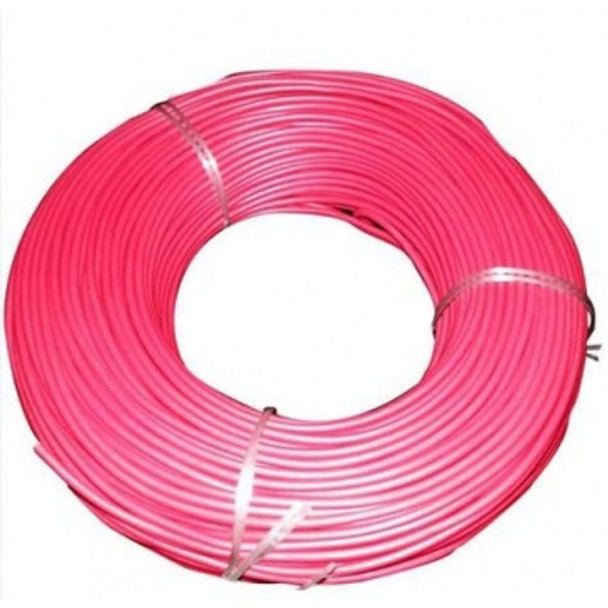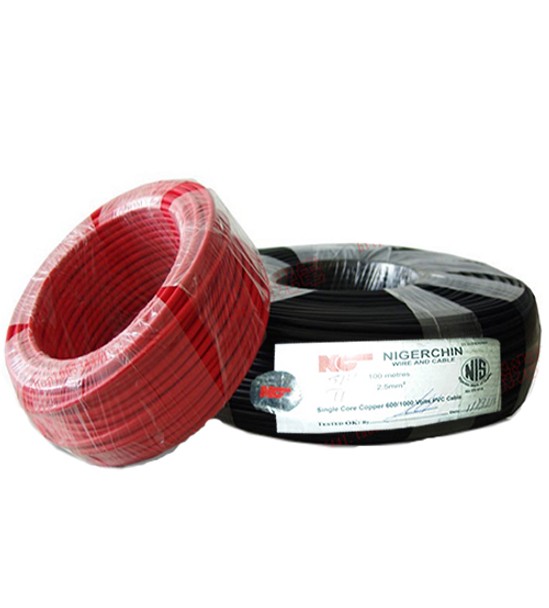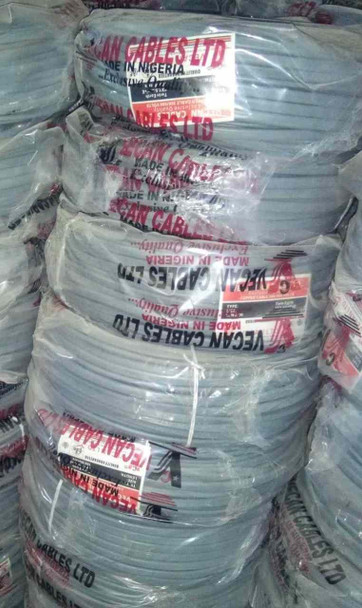The Role of High-Quality Cables in Power Distribution Systems
Key Takeaway
- Enhanced Reliability: High-quality cables ensure stable power flow, reducing the risk of outages and interruptions in power distribution.
- Increased Safety: Superior insulation and protective sheaths in quality cables minimize risks like electrical shocks and fire hazards, making them essential for safe power systems.
- Improved Energy Efficiency: Quality cables with better conductivity reduce power losses, leading to significant energy savings and a more efficient distribution system.
Introduction
In power distribution systems, cables are a crucial component, carrying electricity from power sources to end users safely and efficiently. High-quality cables play a critical role in power distribution systems, ensuring reliable, safe, and efficient energy transfer from power sources to end users. These cables are designed with superior insulation, robust protective sheaths, and high-conductivity materials like copper, which minimizes energy loss and supports efficient power flow.
By investing in quality cables, power providers can reduce the risk of outages and safety hazards such as electrical fires or shocks. Additionally, high-quality cables offer greater durability and longevity, resulting in fewer repairs and lower maintenance costs over time. This not only provides economic benefits but also contributes to a more sustainable power grid by minimizing waste and reducing the need for frequent replacements. For any power distribution network, the use of high-quality cables is essential to support reliable, safe, and eco-friendly energy solutions.
This article explains why high-quality cables are critical in power distribution systems, covering the types, benefits, and properties that set them apart.
Cutix Electrical Cable 6mm Single Core
Importance of High-Quality Cables in Power Distribution
High-quality cables serve as the backbone of power distribution, ensuring that energy flows without disruption, loss, or safety risks. Here’s why they matter:
1. Reliability:
High-quality cables are designed to withstand higher electrical loads, temperature fluctuations, and other demanding conditions, reducing the risk of outages and power interruptions.
2. Safety:
Quality cables are manufactured with enhanced insulation and protective sheaths, minimizing risks like electrical fires and shocks. These cables are particularly critical in environments where human safety and sensitive equipment are at stake.
3. Longevity:
Durability is a hallmark of high-quality cables. They’re built to last, resisting wear and tear from environmental factors, mechanical stress, and frequent usage, reducing the need for replacements and repairs.
4. Efficiency:
With lower resistance and better conductivity, quality cables enable efficient power transmission, leading to energy savings. Reduced energy loss means lower operational costs and supports sustainable energy goals by conserving power.
Types of Cables Used in Power Distribution
Different applications in power distribution systems require specific types of cables. Here’s a breakdown of the primary categories:
1. Low Voltage Cables:
Used in residential and small commercial installations where voltage levels are lower (typically below 1 kV). These cables are ideal for powering household appliances, lighting systems, and small machinery.
2. Medium Voltage Cables:
Applied in larger commercial and industrial setups that require a higher level of power, usually ranging from 1 kV to 35 kV. Medium voltage cables are commonly seen in facilities with higher energy demands, such as manufacturing plants and data centers.
3. High Voltage Cables:
These cables, which operate above 35 kV, are essential for long-distance power transmission, such as connecting substations to regional grids. High voltage cables are critical in regional or national power grids and large-scale industrial plants.
4. Specialty Cables:
Designed for specific conditions or functions, specialty cables include fire-resistant, armored, and insulated cables. Fire-resistant cables are vital in settings where flammability is a concern, while armored cables offer protection from physical damage. Insulated cables are key in environments where electrical safety and insulation are paramount.
Vecan electrical Cable 10mm Single Core (copper)
Key Properties of High-Quality Cables
High-quality cables are distinguished by several core properties, which contribute to their superior performance and reliability:
1. Conductor Material:
The conductor material, typically copper or aluminum, impacts a cable’s efficiency and durability. Copper is known for high conductivity and flexibility, making it ideal for applications where efficiency is essential. Aluminum, while lighter and less costly, is commonly used in applications where weight and budget are prioritized but may require larger diameters to match copper’s conductivity.
2. Insulation Quality:
Quality insulation plays a significant role in cable safety and performance. High-quality insulation protects against electrical faults, environmental moisture, and temperature variations, helping to prevent short circuits and ensuring consistent performance over time.
3. Sheath Protection:
The outer sheath provides a first line of defense, protecting the cable from physical damage, chemicals, and environmental exposure. Quality cables are built with durable, resistant sheaths that can withstand challenging conditions, whether underground, in water, or exposed to fluctuating temperatures.
4. Thermal and Mechanical Resilience:
High-quality cables can endure high temperatures and mechanical stress, making them suitable for demanding industrial and outdoor applications. Thermal resilience helps prevent overheating, while mechanical strength ensures cables can handle bending, stretching, and external forces without damage.
Advantages of Using High-Quality Cables
Investing in high-quality cables brings a range of benefits that directly enhance the performance and safety of power distribution systems. These advantages include:
1. Reduced Maintenance Costs:
High-quality cables are built to last, withstanding challenging environmental and operational conditions. This durability means fewer breakdowns, reducing repair and replacement costs over time.
2. Energy Efficiency:
Quality cables with better conductivity reduce energy loss during transmission, leading to cost savings in power bills. Reduced losses not only optimize energy use but also contribute to a more sustainable power grid by conserving energy resources.
3. Enhanced System Performance:
Reliable, high-quality cables ensure a stable power flow, which supports optimal operation of all connected devices and systems. For industrial facilities, this translates into higher productivity and reduced risk of downtime due to electrical issues.
4. Environmental Impact:
Many high-quality cables are manufactured using environmentally friendly materials and methods, and they are designed to last longer. This reduces the environmental burden by lowering waste and conserving resources that would otherwise go into frequent replacements.
NIGERCHINE SINGLE CORE COPPER WIRE 2.5MM
Factors to Consider When Choosing High-Quality Cables
Selecting the right high-quality cable requires careful consideration of the following factors:
1. Application and Environment:
Determine whether the cable will be used indoors, outdoors, underground, or in harsh environments. Cables designed for outdoor or underground use often have extra protective layers to shield against moisture, UV radiation, and physical wear.
2. Voltage Requirements:
Different applications have specific voltage requirements that the cable must accommodate. Using cables with the appropriate voltage rating ensures that the system operates safely and prevents overheating or potential fire hazards.
3. Certification and Standards Compliance:
It’s essential to choose cables that meet industry standards for safety, such as those set by the IEC, ANSI, or IEEE. Certified cables undergo rigorous testing for quality, ensuring they meet performance and safety requirements for reliable use.
4. Budget and Cost Efficiency:
While high-quality cables can be more expensive initially, their durability and efficiency result in long-term cost savings by reducing maintenance, repair, and energy expenses. Consider both immediate and future costs when evaluating cable options.
Learn more:
Comparing Different Cable Materials: Copper vs. Aluminum
Challenges of Using Low-Quality Cables in Power Distribution
The use of low-quality cables in power distribution systems can lead to several critical challenges, including:
1. Frequent Breakdowns and Maintenance Needs:
Low-quality cables are more susceptible to damage, requiring more frequent repairs or replacements. This not only leads to higher maintenance costs but also increases the risk of downtime.
2. Safety Risks:
Inferior cables often lack proper insulation and protective sheathing, increasing the risk of electrical faults and fire hazards. For any power distribution system, these risks can be catastrophic, especially in densely populated areas or industrial facilities.
3. Reduced Efficiency and Increased Losses:
Low-grade materials result in higher resistance, leading to energy loss during transmission. This inefficiency not only raises operating costs but can also place additional strain on the power grid.
4. Environmental Consequences:
Low-quality cables degrade faster, leading to increased waste and a higher frequency of replacements. This creates additional environmental burdens due to both the discarded cables and the resource demand to manufacture new ones.
Vecan Electrical Cable - 2.5mm Twin/Earth (Copper)
Examples of High-Quality Cable Applications in Power Distribution
High-quality cables are applied across various settings to enhance safety, efficiency, and reliability in power distribution:
1. Residential Power Supply:
In homes, high-quality low-voltage cables ensure consistent and safe power to appliances and lighting, reducing the risk of overloads and electrical fires.
2. Industrial Facilities:
Factories and industrial plants rely on robust medium- and high-voltage cables to power heavy-duty machinery. High-quality cables here minimize power interruptions, enhancing productivity and safety.
3. Renewable Energy Installations:
Solar farms, wind turbines, and other renewable installations require specialized cables that can handle environmental exposure while efficiently conducting power. High-quality cables in these settings support both reliability and sustainability.
4. Urban Infrastructure:
Cities require durable and reliable cables for powering essential services, from public transport to street lighting and communication networks. Quality cables in urban grids reduce outages and ensure continuous service for public systems.
Frequently Asked Questions
1. How do I know if a cable meets industry quality standards?
Industry quality cables come with certifications from standard organizations like IEC, ANSI, or IEEE. These certifications indicate the cable has passed performance and safety tests.
2. Are there significant cost differences between high-quality and low-quality cables?
Yes, high-quality cables typically cost more upfront due to better materials and manufacturing processes. However, they offer long-term savings by reducing maintenance needs, energy losses, and replacements.
3. What is the impact of cable quality on energy efficiency?
High-quality cables have lower resistance and better conductivity, which reduces energy losses during transmission, leading to cost savings and improved energy efficiency.
4. How do environmental conditions affect the lifespan of power cables?
Exposure to heat, humidity, and chemicals can degrade low-quality cables quickly. High-quality cables are designed to withstand harsh environmental factors, offering a longer lifespan.
5. Can high-quality cables reduce overall maintenance costs?
Absolutely. With superior insulation, durability, and resilience, high-quality cables require fewer repairs and replacements, leading to lower maintenance costs over time.
Related Articles
The Best Electrical Wire in Nigeria 2024 (Updated)
Which electric cable is best for house wiring
Conclusion
In power distribution systems, high-quality cables are essential for ensuring reliable, efficient, and safe power flow. By investing in cables with superior conductor materials, high-grade insulation, and protective sheaths, power providers can reduce maintenance costs, enhance system performance, and improve energy efficiency. Quality cables are particularly valuable in demanding environments, from industrial plants to renewable energy installations, where they support uninterrupted power delivery. In the long term, high-quality cables not only lower operational costs but also contribute to sustainable power systems by reducing energy waste and environmental impact.
For a wide selection of high-quality cables that meet industry standards and suit diverse power distribution needs, visit GZ Industrial Supplies. Explore durable and efficient cable options that enhance the safety and performance of your power distribution systems.
Recent Posts
-
Why Use Distilled Water For Inverter Battery
Introduction Inverter batteries are essential for uninterrupted power supply, especially in are …Apr 01, 2025 -
THE BEST MAGNETIC DRILLING MACHINE IN NIGERIA 2025 REVIEWS
Introduction The Magnetic drilling machines are power tools also called mag drills. They are es …Mar 31, 2025 -
Top Selling Magnetic Drilling Machines in Nigeria
Magnetic Drilling Machine is a portable drilling machine with a magnetic base (either electroma …Mar 31, 2025








